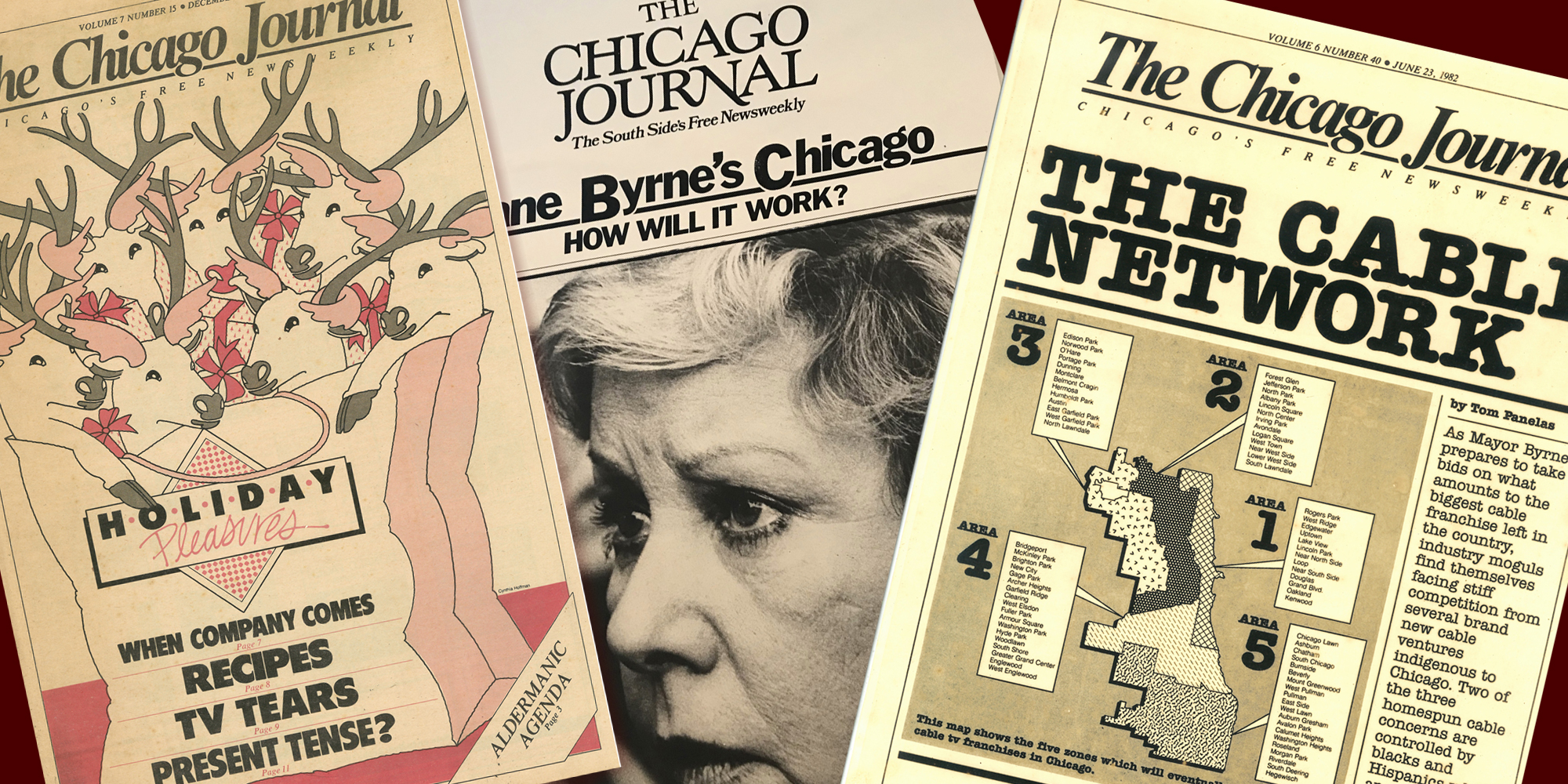
(All images courtesy Eugene “Chip” Forrester, AB’77/The Chicago Journal, photographer noted when known)
The Chicago Journal—rival to the Maroon, free South Side weekly, journalism and business talent incubator—had a memorable eight-year run.
Like any piece of journalism, this is a story.
The son of a serving soldier, I grew up living all over the world. Whenever the family relocated, my mother would take us on memorable expeditions in our new hometown. We explored back alleys in Paris and small villages in England, toured London, and uncovered amazing places around Manila, in the Philippines. I was imbued with a sense of adventure and curiosity to understand my new environs wherever I was. It was part of the family legacy.
So was the University of Chicago. My grandfather Percy E. Wagner, PhB 1916, had always spoken reverently of his alma mater, where he was on the track team and a member of the Order of the C.
In the fall of 1973 I was heading to the College myself, determined not only to get an education but to explore and understand the Second City. I was blessed with an old Opel Kadett, and shortly after settling in at Burton-Judson, I began venturing out to see Chicago’s South Side.
Along with this passion for exploring, I brought with me experience as a reporter and photographer for my high school newspaper. Soon after arriving in Hyde Park, I made my way to Ida Noyes and the upstairs offices of the Chicago Maroon, for which I began writing stories and taking photos, developing black-and-white film in the basement dark room.
Meanwhile, a class with one of the best professors I ever had, Richard Taub, gave shape and purpose to my wanderlust. In his Common Core sociology course, Taub had us pair up with a classmate (my partner in crime was Pete Sturman, EX’77) and pick a Chicago neighborhood to visit. We were to, in Pete’s memory, “open our eyes and take notes!” Taub gave us a set of questions to use as a way to begin understanding the neighborhood sociologically: How did neighbors interact? What kind of retail stores were there? What condition was the housing in? Pete and I chose Little Italy and Taylor Street. Besides our assigned investigations, we discovered our go-to Italian restaurant for years, Gennaro’s.
The experience encouraged me and my friends to further explore the city. We found Theresa’s, where we heard world-class blues musicians like Buddy Guy and Junior Wells, the Checkerboard Lounge on 43rd Street, and the Brown Derby on 51st, where shots of Jack Daniels were 50 cents each.
By my third year I’d become the Maroon’s news editor. With a vivid sense of the life of the city beyond the University’s perimeter, I began a concerted effort to see the paper break out of the Hyde Park–Kenwood cocoon and begin covering the greater South Side—to no avail. After I ran for editor that spring and lost, I decided to pursue this work under a new banner.
The paper I helped found, the Chicago Journal, grew out of a realization by a small band of UChicago students that Hyde Park–Kenwood was an island on Chicago’s South Side, one that lay within a community we had little to no clue about. These students set out to explore, study, and document life outside the patrolled sanctuary of Hyde Park–Kenwood.
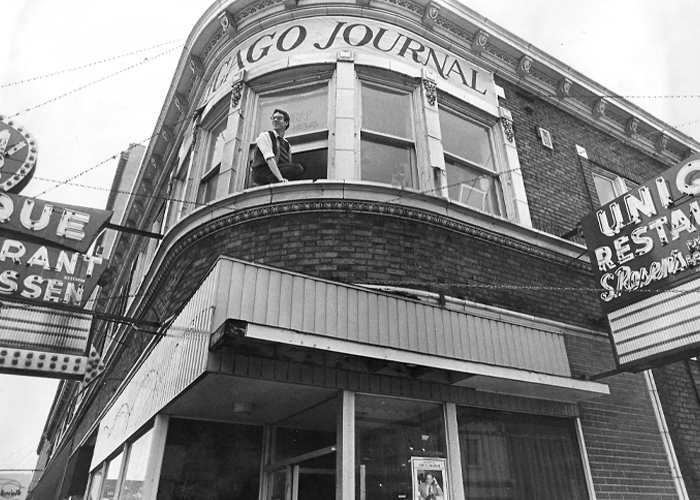
When I was attending the College, students rarely ventured beyond 47th Street to the north, 60th Street to the south, or Washington Park to the West. White-and-maroon security phones and the campus police were constant reminders that you crossed these boundaries at your own peril.
Yet a whole world lay beyond these borders—South Shore, Lake Meadows, Prairie Shores, Englewood, Avalon Park, Beverly-Morgan Park, South Chicago, Chatham, Woodlawn. Parents raised their families, businesses operated, schools educated children, and politicians made decisions that affected people’s lives.
Among the South Side politicians whose careers we covered closely were politician Harold Washington, who served in the Illinois House and Senate and the US House before becoming Chicago’s first Black mayor. Other notables were Barbara Flynn Currie, LAB’58, AB’68, AM’73; Carol Moseley Braun, JD’72; Toni Preckwinkle, AB’69, MAT’77; Ross Lathrop; John Stroger; and Ralph Metcalfe.
If the paper’s beat would distinguish it from anything else being published by students in the College, so would its look. Designer Cindy Hoffman, AB’79, an Ideas and Methods major, was part of the founding group. She and I planned a graphically bold, visually unfettered newsweekly that would capture readers on the first page and carry them through the last. Cindy had followed the work of the late New York Magazine cofounder and graphic designer Milton Glaser. “Glaser’s influence on me,” she recalls, “was all about typography and utility. In his words, ‘A weekly magazine needs a very rigid design system. With tight deadlines and last-minute changes, there is no opportunity for elaborate layout considerations. … The illusion of unmanipulated presentation is the goal.’”
With this double mission—to focus on the entire community in which we lived and to present our reporting with powerful graphic design—we launched the Chicago Journal.
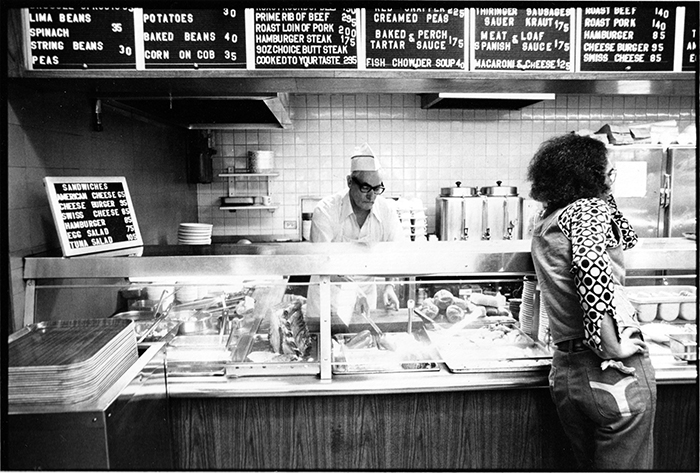
There were two iterations of the Chicago Journal. The first one began in 1976 as a student-run newspaper at the University, officed in a tiny, cramped cubbyhole hidden away in Ida Noyes Hall. We enjoyed the support and guidance of Marie Wester, the “Queen” of Ida Noyes and the assistant director of student activities.
The first issue, published September 20, 1976, featured 41 names on the masthead, with no real hierarchy. On the cover was a photograph of Promontory Point with downtown Chicago in the background, taken from 1,000 feet in the air. A private pilot, I rented a Cessna 172 from Midway Flyers and captured the image.
For that first year, the paper’s student-reporter staff developed sources in the University administration and published stories that did not endear us to the public relations office. We investigated the University’s role in the Hyde Park housing market and took a critical look at the hospital’s emergency room. Ultimately the paper was denied access to University president John T. Wilson.
In the spring of 1977, as the end of my fourth year and the Chicago Journal’s first volume year were in sight, I received a call asking me to see vice president of community affairs Jonathan Kleinbard. It was never a good sign to be summoned to Mr. Kleinbard’s office. As he motioned me to sit down, he abruptly asked, “Most of you are graduating this year. What are your plans for the Chicago Journal?” I told him I assumed that the next class of students would take it over. He said that the University did not have that in mind—and that all the paperwork had been drawn up to relinquish full legal and editorial control of the newspaper to the staff. He needed an answer in 48 hours.
With that, the second Chicago Journal—a for-profit independent newsweekly for Chicago’s South Side—was born. Ann Grimes, AM’78, a subsequent editor of the paper, likens our venture to a start-up: “We didn’t have the vocabulary back then to call it a start-up, but that’s what it was. The team raised initial funding from what we now would call ‘friends and family.’ We were twenty-somethings who made it up as we went.”
We spent the summer of 1977 looking for a place to work and assembling a staff. We found office space at 1505 East 53rd Street, above what’s now Pizza Capri. In this incarnation of the paper, we decided on a more conventional hierarchy. Gordon Crovitz, AB’80, and Margaret Roberts, AM’72, were coeditors, and Carl Lavin, AB’79, was the news editor. Gordon would concentrate on investigative news, Margaret on features. In that capacity she was the first editor of future New York Times columnist Brent Staples, AM’76, PhD’82. Cindy became the art director.
University trustee Andrew M. Alper, AB’80, MBA’81, was our first advertising manager and our occasional distributor. Andy’s business acumen—which would later carry him into the highest levels of finance—was on display from the very beginning. In a valiant attempt to determine the “cost per issue” and thus calculate the advertising revenue needed to sustain the paper, he directed Cindy to account for every production expense she incurred, finally asking her, “How much line tape do you use per issue?”
As the fall 1977 launch of our newly independent newsweekly approached, we had an office and an operating structure. Now we needed a killer story.
Unknown to many Hyde Parkers, Kenwood was home to the World Heavyweight Boxing Champion Muhammad Ali. Ali had become a Black Muslim and adherent of the Nation of Islam, whose leader, Elijah Muhammad, was his mentor and Kenwood neighbor. What if we profiled this newsworthy neighbor for our new reader base?
Margaret, photographer Charlie Moseley, AM’69, and I headed to his Woodlawn Avenue house. At the wrought-iron gate I gingerly pushed the buzzer and received a quick reply: “Yes, what can we do for you?” We hoped, I said, to feature Mr. Ali on the cover of the inaugural issue of a new weekly for the South Side and would like to interview him. “Please wait,” came the reply. Shortly after, the gate buzzed open and, as we approached the front door, Muhammad Ali came out to greet us with his young daughter in his arms.
Just like that, Margaret got her cover story, Charlie got the photos—and Ali invited us to his boxing workout the next morning. His dark green Rolls Royce with tan leather seats took us to the Windy City Gym in Woodlawn, where Margaret’s reporting continued—and when the Chicago Journal, no. 1, appeared that fall, Ali graced its cover.
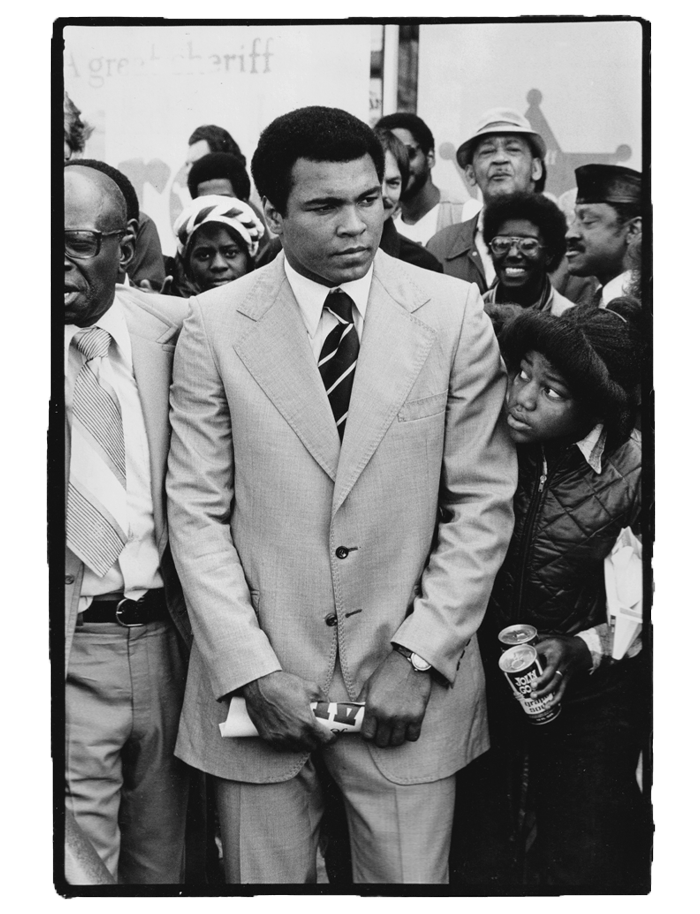
With a hopeful knock on the door of the Greatest began a journalistic adventure that would last until 1984.
In between, Gordon reported on Leon Finney’s outsized salary as executive director of the Woodlawn Organization (TWO), and Frank Gibney Jr., AB’80, covered South Shore Bank and its founder Ron Grzywinski’s efforts to revitalize the South Side (we also banked there to support the mission). Carl profiled the Nazi group in Marquette Park and their commander, Frank Collin, to capture the truth of their hateful cause.
Covering politics on the South Side was David Brooks, AB’83. The New York Times columnist and UChicago trustee remembers the experience as professionally formative: “My year or so at the Chicago Journal was what journalism should be all about. I was writing a weekly column on Chicago politics. Harold Washington was mayor. “Fast Eddie” [Edward Vrdolyak, JD’63] led the city council. The council wars were in full flame. It was a daily extravaganza of salacious conflict and important historical change. I was, like, 22, but I got to interview everybody from Jesse Jackson to Louis Farrakhan to Eddie Burke to Danny Davis. The Chicago Journal was my first real work in this business.”
Our reporting earned awards, but the struggle for revenue was always uphill. The modest affluence of the South Side did not offer a robust advertising base. We worked hard to drum up ads and to serve an underserved community.
The financial challenges, unfortunately, persisted. In 1982 we moved to Printers Row in the South Loop in hopes of finding a more viable and lucrative advertising base. Our early 1984 merger with the River Clipper, a downtown-based free paper, was another attempt to boost advertising sales and keep the paper going.
But later that year, I made the hardest decision of my life at that point and ceased publishing. My biggest regret was not putting out a final issue and saying goodbye to the thousands of loyal readers who followed the paper. We just meekly disappeared.
Many of those who worked on the paper during the previous seven years (plus one) came to look back on the Chicago Journal as a springboard to their success in journalism and business. I too was blessed by this experience. At the Journal I had gotten to know Mayor Washington and his team well, and I ended up as assistant commissioner of economic development for the City of Chicago. From there I headed to Tennessee, my father’s home, where I’ve spent more than 35 years in Democratic politics.
Looking back on all of it, the Chicago Journal makes me most proud. I was honored to toil beside the incredible men and women who were part of it as we told stories that no one else in Chicago was telling.
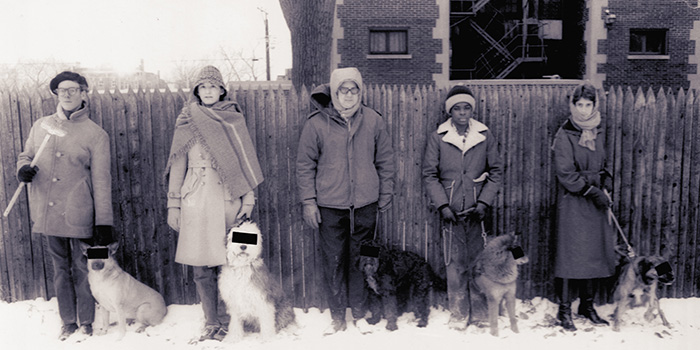
Alumni roll
Chicago Journal staffers went on to make their marks in journalism and business. Here are some of the most notable.
Andrew M. Alper, AB’80, MBA’81. Goldman Sachs partner, former chair and current member of the UChicago Board of Trustees.
“I vividly remember sitting in our second-floor office looking down at a pretty dismal 53rd Street. … Thirty years later I was the newly elected chairman of the UChicago Board of Trustees and 53rd Street was pretty much unchanged from the late ’70s. I was all-in on supporting and championing the substantial investments necessary to make Hyde Park a better, more inviting place to live, work, and shop.” —Andrew M. Alper
David Brooks, AB’83. Author, New York Times columnist, and member of the UChicago Board of Trustees.
Gordon Crovitz, AB’80. Co-CEO of NewsGuard and former publisher of the Wall Street Journal.
Ann Grimes, AM’78. Journalist and director of the Knight-Bagehot Fellowship in Economics and Business Journalism, Columbia Journalism School.
“We took a risk. We were tenacious and ambitious. We were resilient. At the time, it felt like we were wandering in the woods. But it was a formative and foundational experience. What an incredibly talented group. Who knew?”—Ann Grimes
Cindy Hoffman, AB’79. Design director for Bloomberg Digital.
Carl Lavin, AB’79. Manager of business integrity, Facebook.
Marc PoKempner, AB’73 (Class of 1969). Photojournalist with works held by the Art Institute of Chicago.
Margaret Roberts, AM’72. News director, America’s Most Wanted.
“The Chicago Journal was a chance to put my UChicago critical thinking into practice in the nitty-gritty real world—the golden opportunity I was waiting for without even knowing it.”—Margaret Roberts
Brent Staples, AM’76, PhD’82. Pulitzer Prize–winning columnist and editorial board member of the New York Times.
“I started writing for the Journal in ’77. I walked in off 53rd Street and asked folks in the office (Cindy Hoffman and Margaret Roberts, I am almost sure) if they wanted me to write something. I remember telling them that I had a lot of sketches in a kind of diary of Chicago (the city) and could probably derive something from that. They thought that curious (which it certainly was), but that is where it started.”—Brent Staples
Chip Forrester, AB’77, is the former chair of the Tennessee Democratic Party.
Updated 09.22.2021: Corrected to credit Andrew Seipos, AB’74, as the photographer of the Muhammad Ali portrait.
